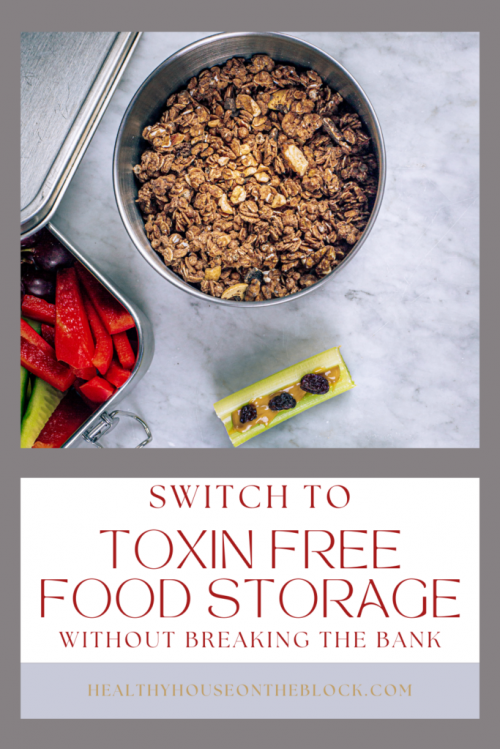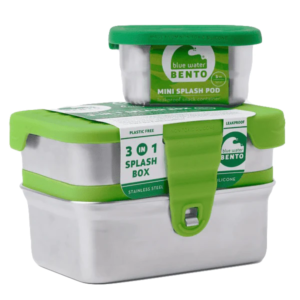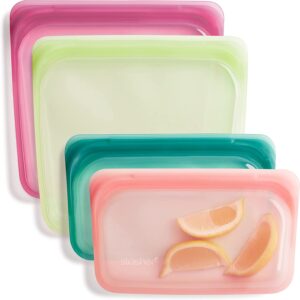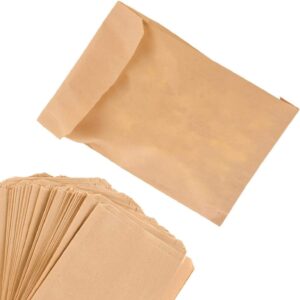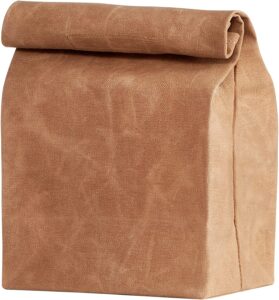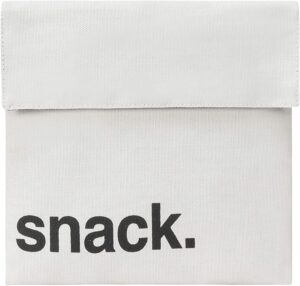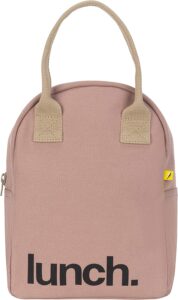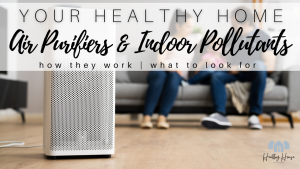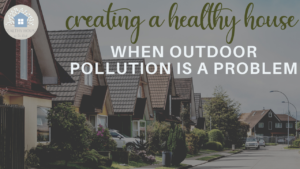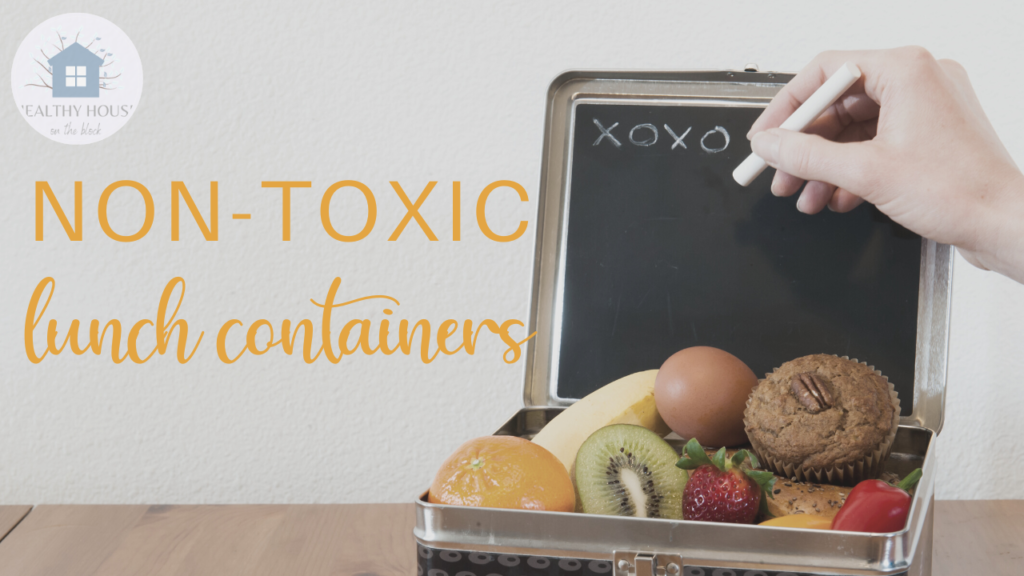
I know that some of you have had kids in school for well over a month now, but here in the great State of Minnesota, we are just finally getting back into the swing of the school year hustle. And this means that we are making lunches and snacks to go for my two oldest. Over the last few years I’ve been able to completely swap out our kids lunch box options for food storage — and we are now working with a completely nontoxic inventory.
Swapping out things like the kids lunchbox options has been a LOOOOOONG process. Because for our family it just wasn’t feasible to completely switch out everything we had and then replace it all with brand new, we did just a little bit at a time.
The first thing we did was get rid of anything we really weren’t using. This has been my go-to trick with replacing ANYTHING in the kitchen. Pair down what you have and really only keep what actually gets used. This was especially true of water bottles. It seems like every sport or event we went to, my girls came home with another water bottle to add to our collection. But really, they probably only need two water bottles each at the absolute most.
So we got rid of what we didn’t REALLY need for water bottles and kids lunch box storage and looked at what was left. There were a few newish containers that weren’t plastic free and we used them for just about every lunch that got packed. Because they were items we used A LOT, I decided these would be the first to get switched out to some nontoxic containers.
And then as time went on I slowly added a stasher bag or two here and there to the mix to replace our plastic food bags. REusing silicone bags also meant I was saving money on the plastic bags I once had to buy for snacks.
The biggest help I can offer (besides helping you find the non toxic kids lunch box options in the first place) is to share with you that home takes time, and a healthy home takes time too. Changing just one thing at a time is not only easier, but it also ends up being a more sustainable change too. Don’t stress if you’re not able to change every single thing you want to at this exact moment in time. If it helps to jot down the order in which you’re going to swap items out, then do that — I know I like to get my thoughts out of my head that way and it gives me peace to have a plan. Just knowing what steps you’ll be taking to reduce toxins is a HUGE start to living a nontoxic life.

PLASTIC AND FOOD
I’m going to just say it — there is no plastic that is truly 100% safe or healthy for kids lunch box options. Even if the product boasts BPA free or PVC free, there are still other toxins present that are just not as regulated, but still dangerous.
This is why the best approach is to just completely remove plastic from your kids lunch box inventory to be completely nontoxic. Some of the big toxins in plastics are especially harmful with regular use:
Bisphenol Toxins: Bisphenol toxins like BPA, BPS and BPF (and there are others) have started to become regulated. However, just a word of warning, something that is “BPA free” probably also has other bisphenol toxins like BPS (which is actually more dangerous).
Bisphenol toxins mimic estrogen and disrupt our natural hormone production. And in the US, studies have shown that nearly ALL of us have BPA toxins in our bodies Which really means that we’re all being exposed to this toxin in such large amounts that our bodies are unable to keep up with naturally getting rid of it before more enters our bodies.
Bisphenol toxins have been linked to obesity (especially in children), impaired learning and memory, aggressive behaviors, increased risk of type 2 diabetes and impaired glucose tolerance, altered liver function, impaired reproductive function and early onset puberty. (STUDY)

Polyvinyl Chloride: Polyvinyl Chloride, or PVC is made up of a slew of toxic chemicals that are harmful to humans and especially our kids. PVC plastic releases toxins such as dioxins and phthalates during its life lifecycle, which we come in contact with during the use of these plastics.
The human body has been negatively affected by these toxins and over time the chemicals have been shown to cause cancer, harm the immune system and negatively affect the reproductive system. (PVC Toxins)
Phthalates: Phthalates are a type of toxin within plastic that is HIGHLY unregulated. This means that the toxin can be in ANY plastic you or your kids come in contact with, and legally, no one needs to let you know about it.
Phthalates build up in the body as we are exposed to them and because of this, the body has a hard time detoxifying it fast enough. In fact, an EPA study showed that most children’s bodies contain WELL over the allotted limit. (STUDY)
Phthalate exposure has been linked to abnormal reproductive development as well as neurological toxicity in kids and adults. (STUDY)
Some phthalates are also known endocrine disruptors, meaning they hinder our natural hormone production and can in turn cause issues with thyroids, immune system and the reproductive process (STUDY)
An in-depth study also states, “Recent studies also show that prenatal exposure to phthalates is associated with adverse impacts on neurodevelopment, including lower IQ, and problems with attention and hyperactivity, and poorer social communication. ” (SOURCE)

Styrene: The good news about Styrene is that it has been tested and studied showing it is not an endocrine disruptor. However, there are other problems that this toxin exposure poses for those who come into contact with it even at low exposure rates.
The big red flag is that because Styrene is classified as a mutagen, it also means it’s potentially carcinogenic to humans. In fact, Styrene has been anticipated to be a probable carcinogen to humans, as it has already been shown as carcinogenic to animals.
Styrene also has many harmful side effects on the central nervous system, causing significant negative changes to the nervous system itself. It has also been shown to cause memory loss, difficulties in concentration and learning, brain and liver damage. In line with these cognitive issues, Styrene has been linked to poorer visual and sensory function in those with moderate exposure to the chemical.
In pregnant women, Styrene exposure at moderate levels has been linked to low birth weight as well as reduced fertility in otherwise healthy women.
And finally, Styrene is a contributor to chronic diseases and accelerates the onset and progression of these diseases in otherwise healthy individuals.
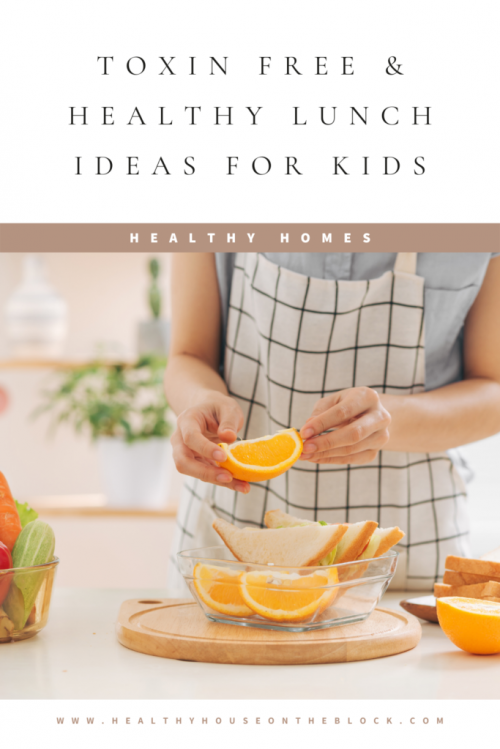
NONTOXIC MATERIALS FOR FOOD STORAGE
Stainless Steel: Stainless steel is an excellent option when it comes to kids lunch box options. I love that they are basically indestructible and aren’t going to be super heavy for them to carry around either. A high grade stainless steel such as surgical grade or 188 or 18/10 is best as it won’t have any aluminum, chromium or nickel present in the material.
Food Grade Silicone: Reusable snack bags, gallon bags and sandwich bags are perfect to have on hand for snacks or separating food in a kids lunch box. Silicone should be food grade or platinum to ensure that it is pure silicone and safe for contact with food.
Glass: The OG of nontoxic materials. Glass containers are often very durable and despite what you might think, don’t break all that often. You can find glass containers with silicone sleeves to protect them even more in your littles hands. It’s also usually a pretty inexpensive swap when you’re switching from plastic to nontoxic materials. And as a side note, we love glass because it can usually go right into the oven for a quick reheat.
Paper: Paper products like sandwich paper, butcher paper and parchment paper are GREAT additions to your inventory for lunchtime. They’re all toxin free and can be really handy to quickly wrap up something that might not need an entire container. Plus, if your kids are anything like one of mine, you might hesitate sending containers to school for fear you may never see them again. Paper is great in this sense as it can be recycled instead of brought back home.

HEALTHY HOUSE KIDS LUNCH BOX PICKS
QUICK & CLEAN KIDS LUNCH IDEAS
